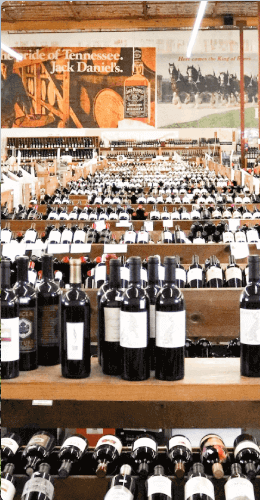Rosé vs. White Zinfandel: A Consideration

White Zinfandel should receive more credit than it now usually receives. The name was created by Sutter Home winery, which proudly states it is “the brand that has introduced more Americans to wine on the table than any other.” That is true. White Zinfandel’s huge popularity in the 1970s and 80s helped save many old Zinfandel vines in California from uprooting. We are, now, thankful for that. Sutter Home belonged to the pioneering Bob Trinchero.
What is White Zinfandel?
It’s an entry-level wine, relatively sweet, with a fruit forward palate and aroma. The color can range from light pink to translucent rose petal. It’s an immediately accessible wine for most drinkers. White Zinfandel is thus a far cry from its red brother: rich, possibly voluptuous, with tannins and high alcohol. It has served as a perfect, enticing beverage, introducing the pleasures of wine drinking to at least three generations. That is what happens when you make a rosé wine from black grapes and leave plenty of sweetness.
Yes, technically, White Zinfandel is a rosé wine. There is no wine grape variety named “white Zinfandel.” The color comes from short periods of skin contact resulting in a tincture of color, but in a usually very translucent wine. The color in wine comes from the skin; just think of “orange wine.”
White Zin happened, so the legend goes, by mistake. In 1972, Bob Trinchero experimented with a winemaking technique called “saignée,” also used in making rose Champagne. He ran off some of the free-run juice from Zinfandel skins to create a concentrated and robust Zinfandel. The runoff juice—pink in color—was then fermented to dryness, creating Sutter Home’s first vintage. In 1973, it was a dry wine. This is similar to how some Argentina wineries are now making “White Malbec.” Inside that white wine bottle, this wine is made from black Malbec grapes, but with zero skin contact. Since the color comes from the skin, one can make a white wine from red or black grapes.
Then, in 1975, Bob’s 1974 vintage White Zinfandel suffered a stuck fermentation. That occurs when the yeast in the must (the fermenting grape juice) suddenly stop working, leaving the wine with some alcohol and plenty of residual sugar. Since there was skin contact during the “stuck” period, the wine ended up with a light pink color and about two percent natural sugar. Trinchero tried the wine and liked it; he saw potential. “Sutter Home’s customers loved this delicious new wine style, and very quickly White Zinfandel became the first wine Sutter Home ran out of each year.” It remains very popular and is now produced by other wineries.
If White Zinfandel is a rosé wine, then how are rosé wines different from White Zin?
The majority of rosé wines are dry or off-dry. White Zin will always be sweet. Rosé wines can be sweet, but more likely they will tend towards dryness. Rosés can also be made from a variety of different black-skinned grapes, not just Zinfandel, but also Tempranillo, Cabernet Sauvignon, Merlot, Syrah, Grenache, and dozens of Italian grape verities. So, when you order wine online, be sure to check out the varieties available. You may find one you particularly like.
Judging by the depth of the rose color, you can guess how much skin contact existed during winemaking. This is always limited, though, so rosé wines are generally not tannic. Tannins, like color, come from the skin. Rose wines are generally light, fruit, and refreshing. Rosé wines are not the result of a mixture of red wine with white wine.
The most classic rosé wines probably come from Provence in France, and they will generally be fermented to dryness. Some may have very light aromas and flavors while others, generally those darker in color, will have more attention catching fruit on the palate.
Both rosé wines and White Zinfandel (which is a rosé wine) should be served chilled. They both make nice aperitif wines.
If you’re hosting a party or event, and some of your guests may not be everyday wine drinkers, then offering a mix of the sweet White Zinfandel alongside some drier rosés is a perfect option. After you order rosé wine online, these can be drunk on their own or with food. Best of all, White Zin is a good value, and so are most rosés.


















Leave a comment